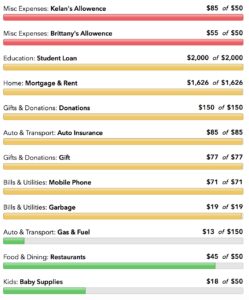
Match the deposits in the business records with those in the bank statement. The more frequently you do a bank reconciliation, the easier it is to catch any errors. Many companies may choose to do additional bank reconciliations in situations that involve large sums of money or that show unusual financial activity. This can include large payments and deposits or notifications of suspicious activity from your bank. In these situations, it’s a good idea to perform an immediate reconciliation. One reason for this is that your bank may have service charges or bank fees for things like too many withdrawals or overdrafts.
Bank Reconciliation Statement
By following this, you can effectively prepare a bank reconciliation statement and maintain accurate financial records. That being said, you’ll probably have to adapt this guide to suit your company’s needs. For example, say ABC Holding Co. recorded an ending balance of $500,000 on its records. After careful investigation, ABC Holding found that a vendor’s check for $20,000 hadn’t been presented to the bank. It also missed two $25 fees for service charges and non-sufficient funds (NSF) checks during the month.
- You’ll need a few items to perform a bank reconciliation, including your bank statement, internal accounting records, and a record of any pending cash transactions (either inflows or outflows).
- However, there can be situations where your business has overdrafts at the bank, which is when a bank account goes into the negative as a result of excess withdrawals.
- Accurate cash flow is essential for keeping a business running smoothly, so it’s important to be aware of all incoming and outgoing cash.
- These checks are in transit, so they haven’t yet been deposited into the company’s bank account.
Journal entries, also known as the original book of entries, refer to the process of recording transactions as debits and credits, and once these are recorded, the general ledger is prepared. After adjusting all the above items what you’ll get is the adjusted balance of the cash book. However, there can be situations where your business has overdrafts at the bank, which is when a bank account goes into the negative as a result of excess withdrawals. Not-sufficient funds (NSF) refers to a situation when your bank does not honour a check, because the current account, on which the check is drawn, has insufficient funds. Bank statements are more than just records of financial transactions; they are a window into the…
Example 1: Preparation of Bank Reconciliation Statement Without Adjusting the Cash Book Balance
Completing a bank reconciliation entails matching the balances on your bank statement with the corresponding entries in your accounting records. The process can help you correct errors, locate missing funds, and identify fraudulent activity. While reconciling your books of accounts with the bank statements at the end of the accounting period, you might observe certain differences between bank statements and ledger accounts. If this occurs, you simply need to make a note indicating the reasons for the discrepancy between your bank statement and cash book. As a result, the bank statement balance will be lower than the cash book balance, so the difference present and future value will need to be adjusted in your cash book before preparing the bank reconciliation statement.

Reasons for Preparing a Bank Reconciliation
You receive a bank statement, typically at the end of each month, from the bank. The statement itemizes the cash and other deposits made into the checking account of the business, as well as any expenses paid by the business. This includes everything from wages and salaries paid to employees to business purchases like equipment and materials. Bank statements also show expenses that may not have been included in financial statements, such as bank fees for account services. A bank reconciliation compares a company’s cash accounting statements against the cash it has in how to create a normal job cost sheet for cost accounting the bank.
The balance recorded in the passbook or the bank statement must match the balance reflected in the customer’s cash book. It is up to you, the customer, to reconcile the cash book with the bank statement and report any errors to the bank. Sometimes your current bank account balance is not a true representation of cash available to you, especially if you have transactions that have not settled yet. If you’re not careful, your business checking account could be subject to overdraft fees. To quickly identify and address errors, reconciling bank statements should be done by companies or individuals at least monthly. They also can be done as frequently as statements are generated, such as daily or weekly.
She has more than five years of experience working with non-profit organizations in a finance capacity. Keep up with Michelle’s CPA career — and ultramarathoning endeavors — on LinkedIn. Bank reconciliations may be tedious, but the financial hygiene will pay off.
Typically, the difference between the cash book and passbook balance arises due to the items that appear only in the passbook. So it makes sense to record these items in the cash book first in order to determine the adjusted balance of the cash book. Once the adjusted balance of the cash book is worked out, then the bank reconciliation statement can be prepared. Interest is automatically deposited into a bank account after a certain period of time. So the company’s accountant prepares an entry increasing the cash currently shown in the financial records.
These deposited checks or discounted bills of exchange drawn by your business may get dishonored on the date of maturity. As a result, the bank debits the amount against such what is a three-way match in accounts payable gep glossary dishonored cheques or bills of exchange to your bank account. In addition to this, the reconciliation process also helps keep track the occurrence of fraud, which can help you control your business’ cash receipts and payments.
Greg adds the $11,500 of deposits in transit to his bank statement balance, bringing him to $99,500. He also subtracts the $500 in bank fees from his financial statement balance, bringing him to $99,500 and balancing the two accounts. Compare the business’s financial records to the bank statement to spot the errors. This can be accomplished by matching transactions, and then adding or deducting any transactions that do not align to balance the total amounts.

